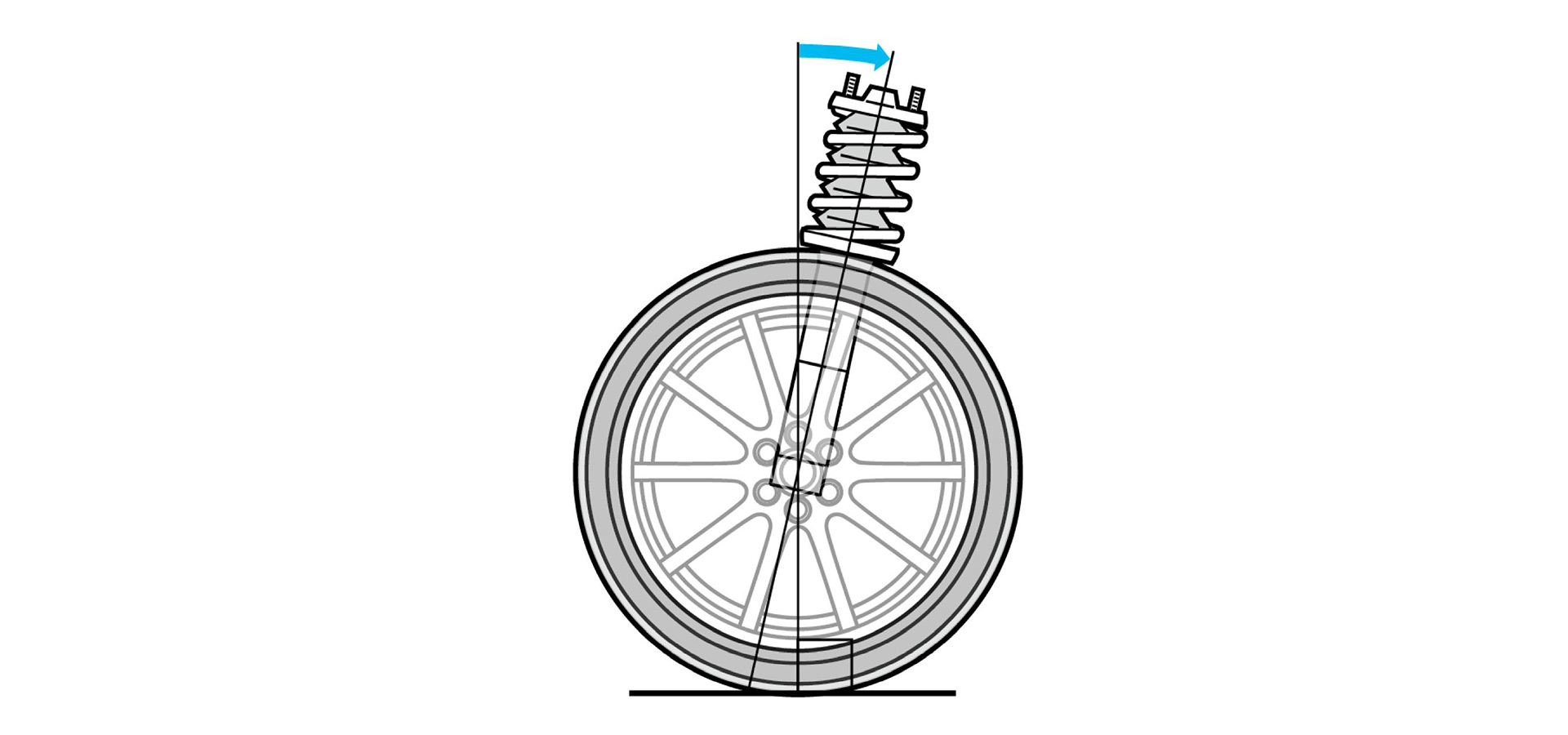Suspension Geometry
Mechanics 10
“Angles” that Determine the Positions of the Tires
A tire may look perpendicular to the ground at first glance, but there are actually many angles involved. These angles are referred to as suspension geometry or wheel alignment.
If a car has improper suspension geometry, it may lose straight line stability or feel strange to control. The following are the four essential items to consider with regard to suspension geometry:
●Toe Angle
This refers to the angle of the tire's centerline in comparison to the straight line of the car in its direction of travel when looked at from above. When the front ends of the tires are spread outwards in the direction of travel, the condition is called ‘toe out’; when they narrow in front and spread out at the back, the condition is referred to as ‘toe in’. The toe angle greatly affects the steering feel and the grip when changing driving lines. If the angles are too extreme, it can cause uneven wear of the tires.

Toe Angle
●Castor Angle
This refers to the angle of the front suspension (the king pin axis) against a line perpendicular to the ground when looking at the car from the side. When the castor angle is increased, the self-aligning torque which pulls the steering wheel back to its straight-line position will become stronger and the car’s straight line stability will increase. However, this also makes the steering wheel heavier when turning.

Castor Angle
●Camber Angle
This is the angle of the centerline of the tires in the vertical direction against a line perpendicular to the ground, when looking at the car from the front. If the tops of the tires are spread outwards from this view, the condition is called ‘positive camber’; if they are narrowed inward, the condition is called ‘negative camber’. When a camber angle is set on the tires, the contact between the tires and the ground will not normally be perpendicular in nature, and this will affect cornering and straight-line stability performance. Race cars tend to be set to a negative camber in order to make the outside of the tires perpendicular to the ground when the car is rolling in that direction while cornering.

Camber Angle
●King Pin Angle/Inclination
This refers to the angle of the king pin attachment axis against a line perpendicular to the ground. This is basically a means of preventing input from the road surface pulling the steering. It affects straight-line stability, self-aligning torque and steering ability.

King Pin Angle/Inclination
